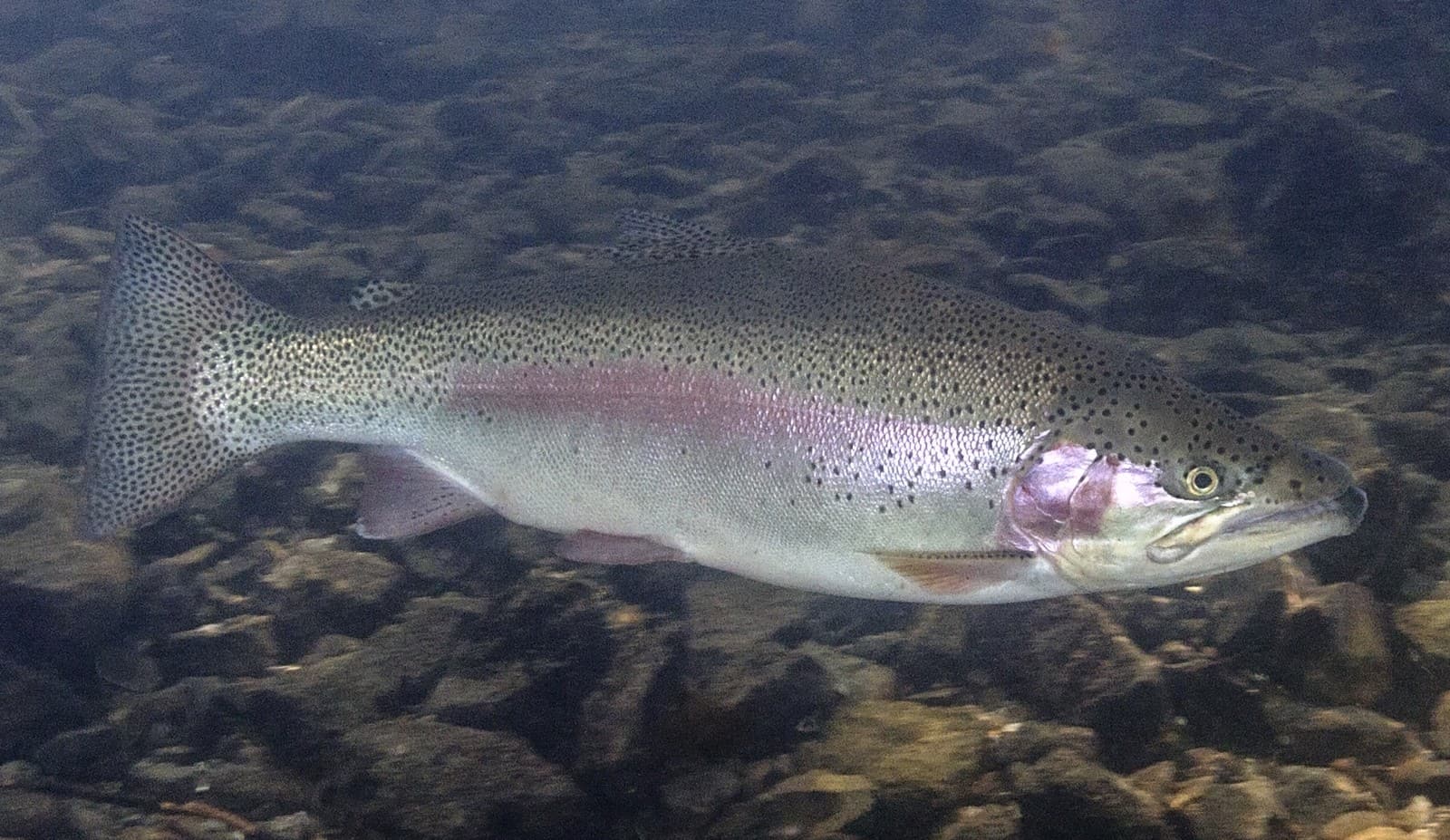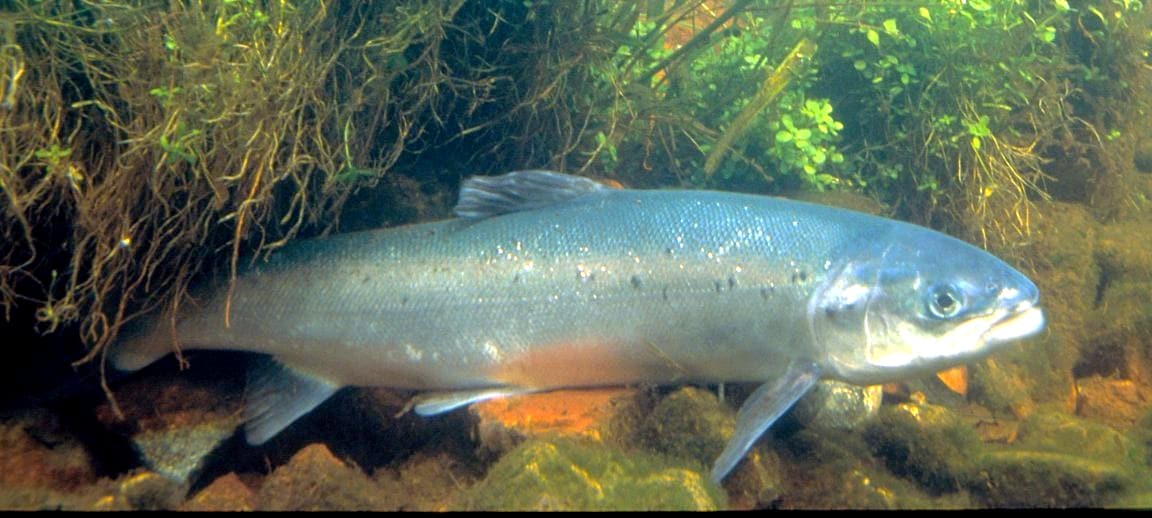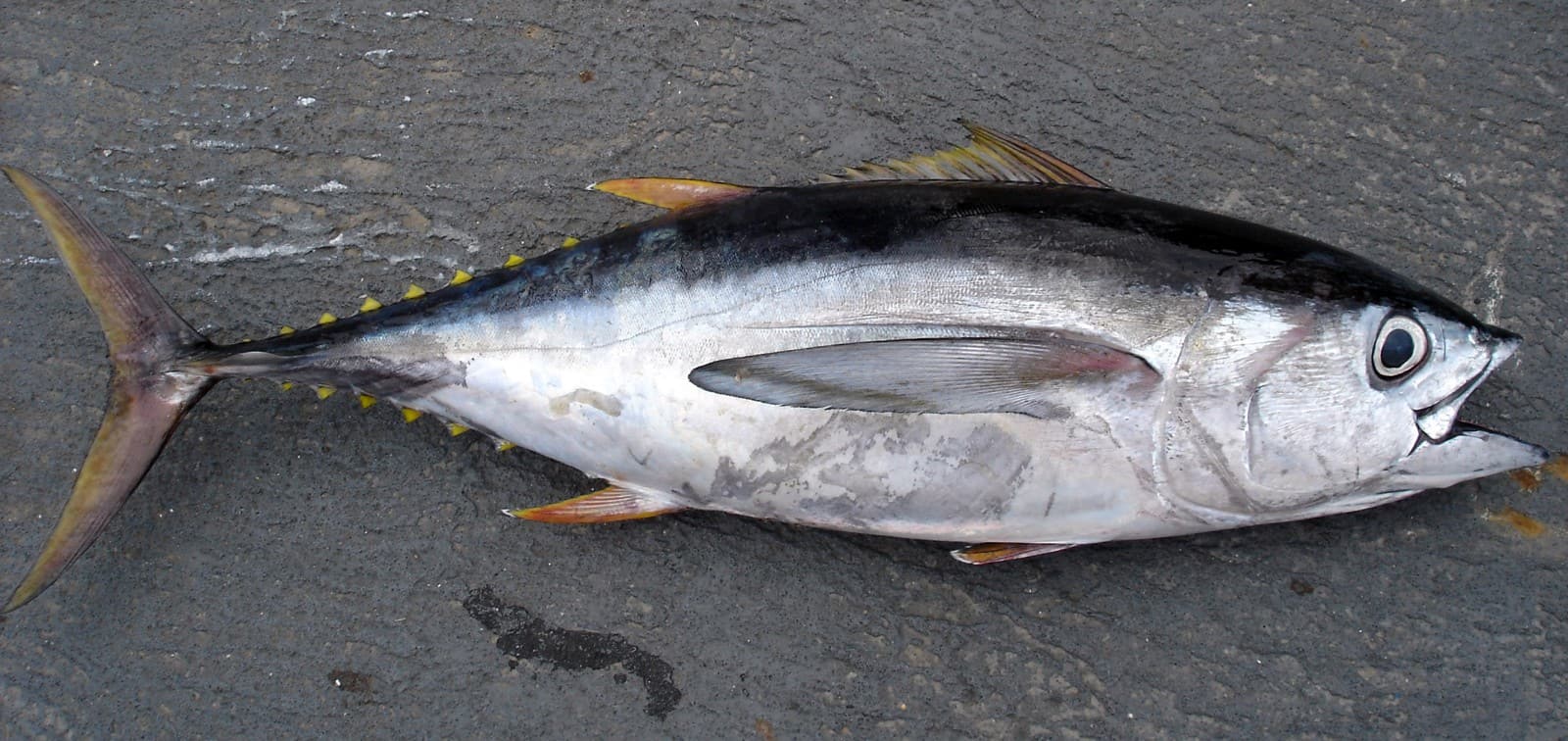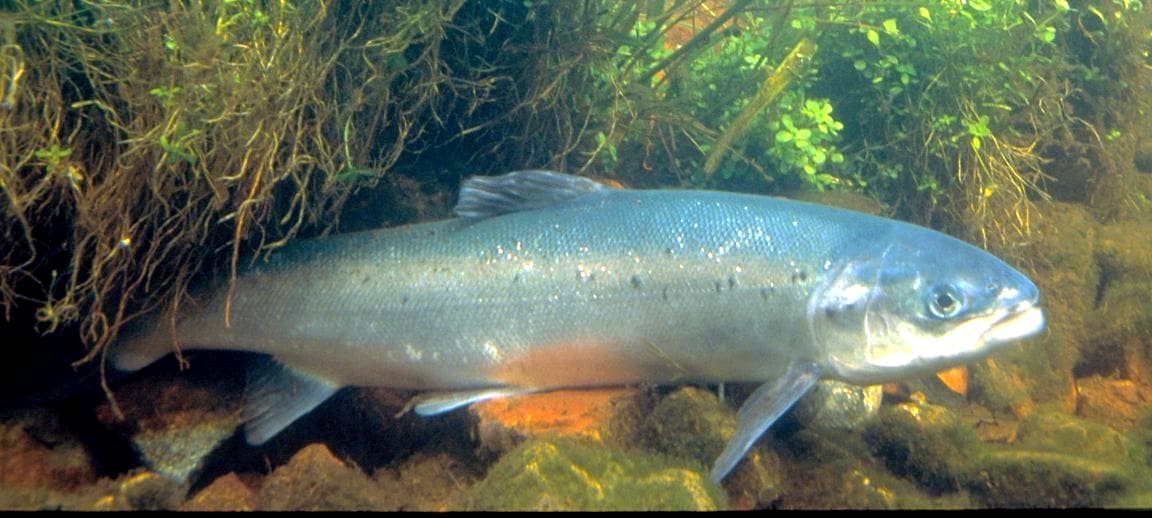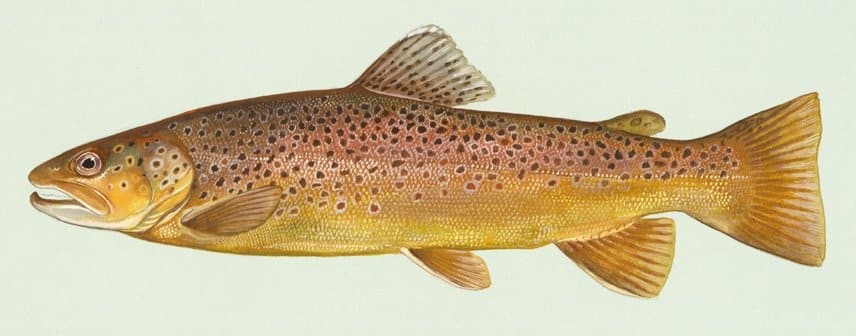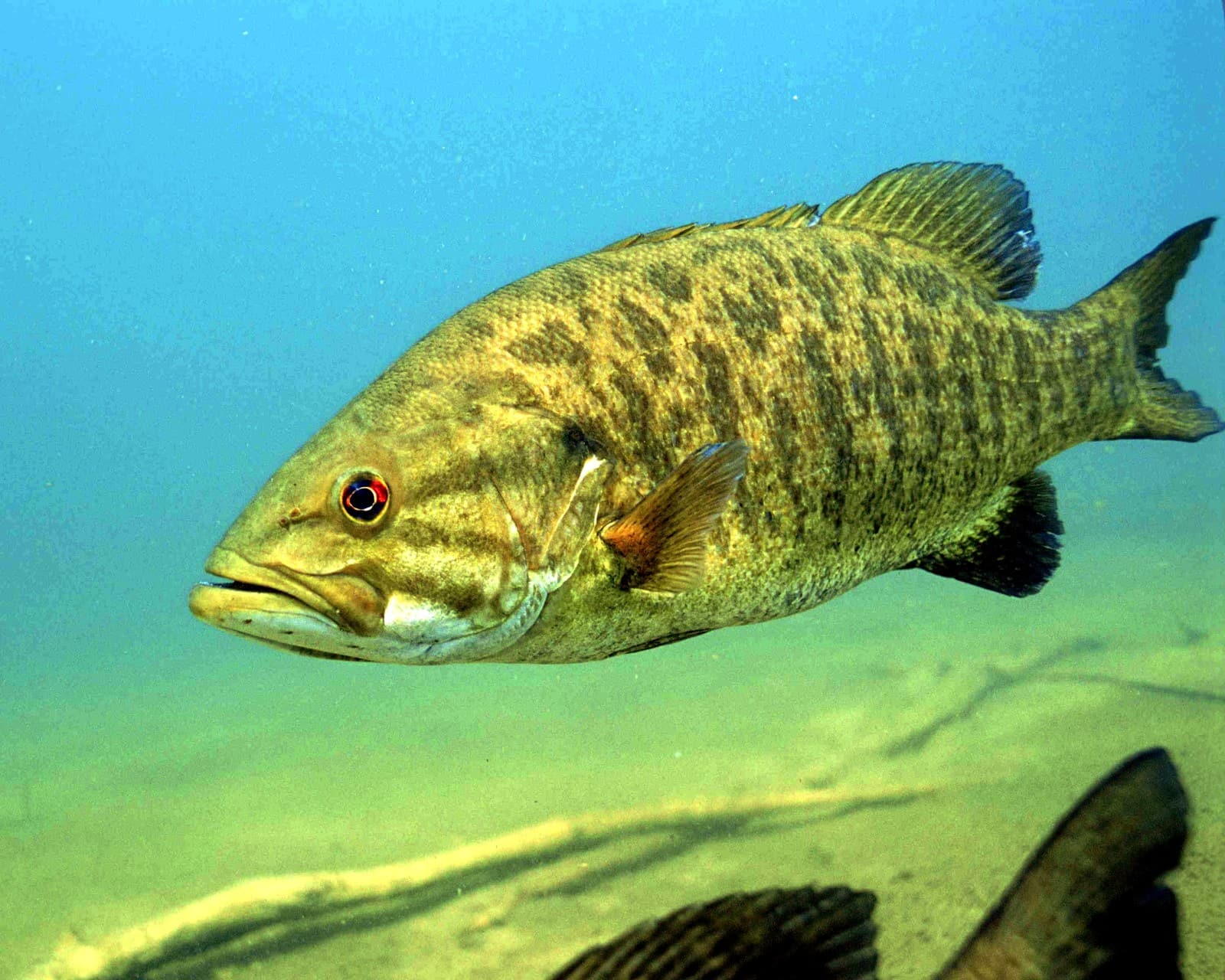Salmon vs Trout: A Complete Comparison
While salmon and trout share the same family (Salmonidae), these remarkable fish species exhibit distinct characteristics that set them apart. The most notable difference between salmon and trout lies in their life cycles: most salmon are anadromous, meaning they migrate from saltwater to freshwater to spawn, while most trout spend their entire lives in freshwater. Adult salmon typically reach larger sizes, with Atlantic salmon growing up to 30 inches (76 cm) in length, compared to the average brown trout’s 20 inches (51 cm).
Understanding the salmon vs trout comparison helps both anglers and culinary enthusiasts make informed decisions. These differences extend beyond size to include habitat preferences, spawning behaviors, and even flesh color. While both fish are prized catches, their unique characteristics serve different ecological roles and culinary applications.
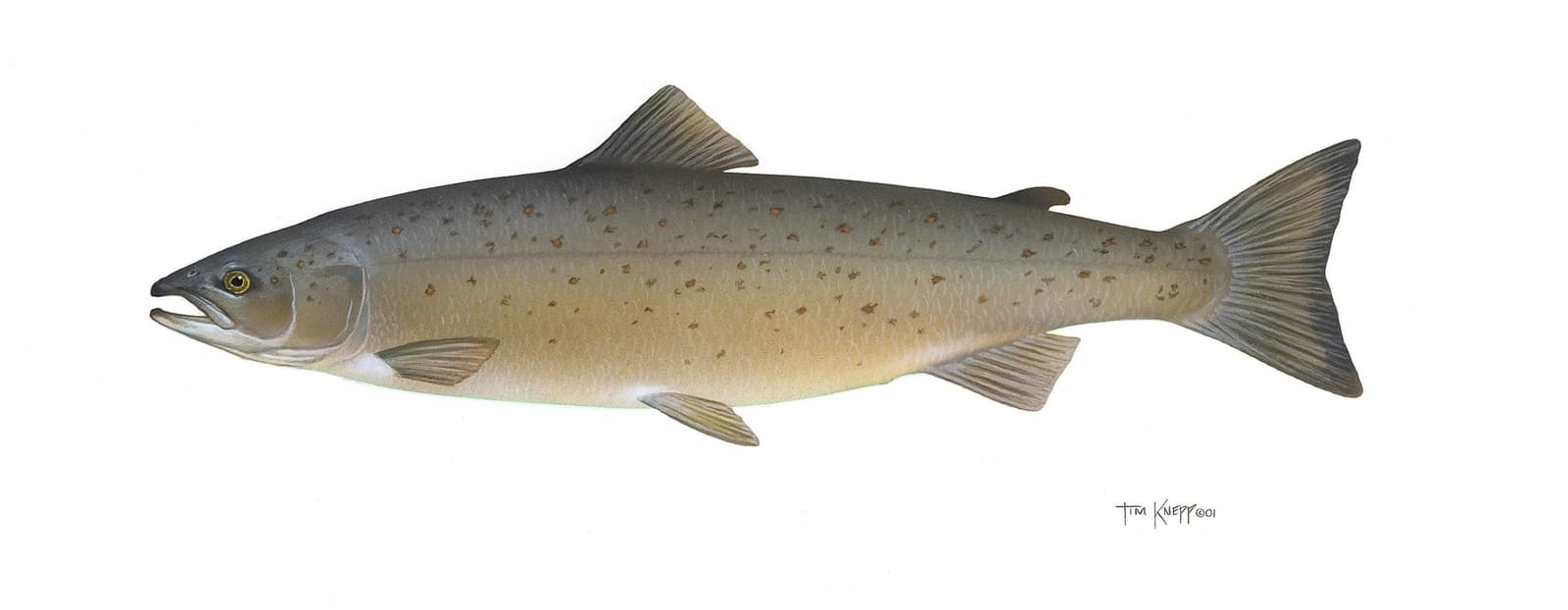
Atlantic Salmon displaying its characteristic silvery coloration and streamlined form, showcasing the distinctive features that separate it from its trout cousins. Note the scattered dark spots and powerful tail fin essential for ocean migration.
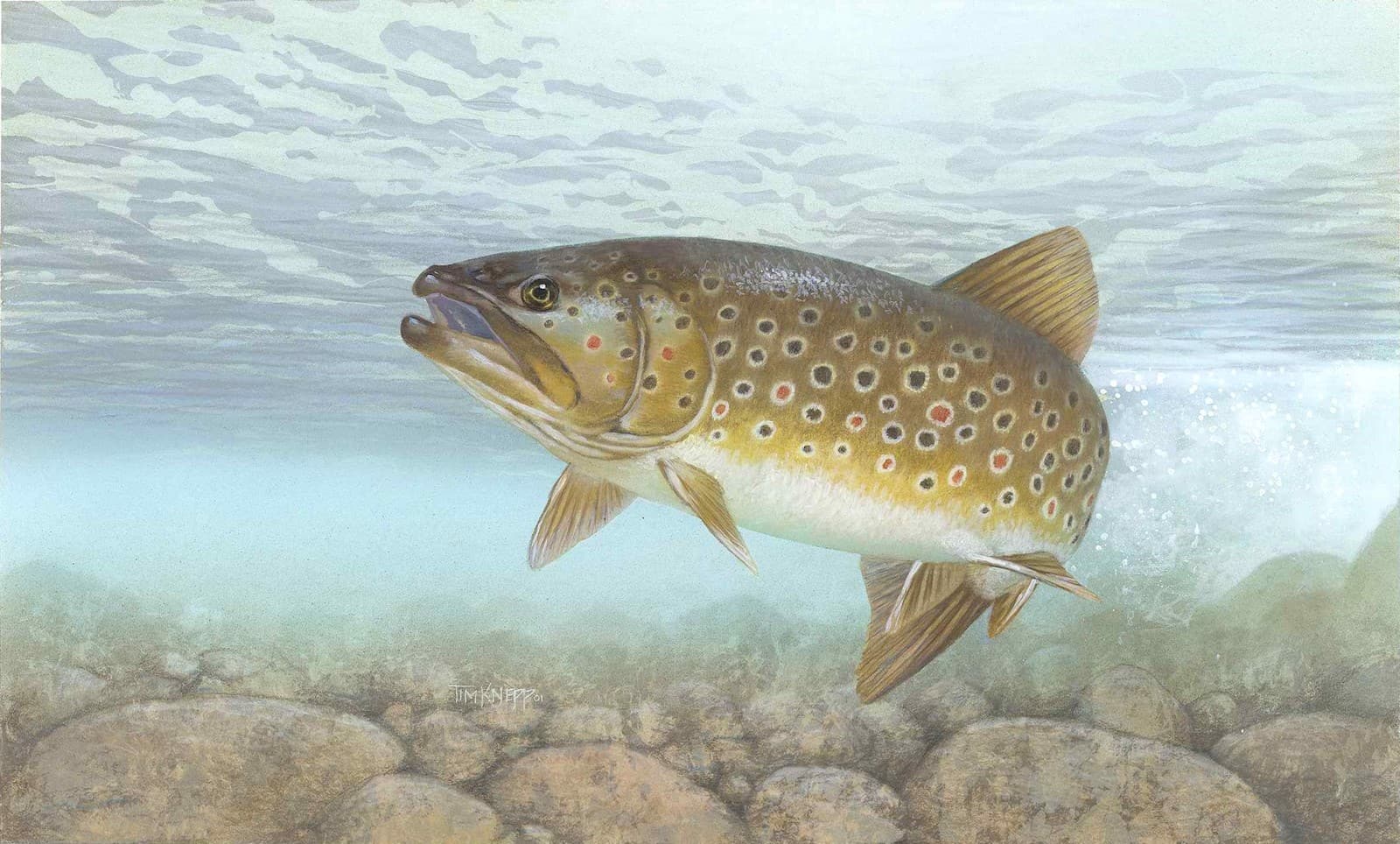
Brown Trout exhibiting its distinctive spotted pattern and golden-brown coloration, typical of freshwater residence. The complex spotting pattern and vibrant colors help distinguish trout from their salmon relatives.
Key Differences: Salmon vs Trout
| Feature | Salmon | Trout |
|---|---|---|
| Size | Larger: 28-30 inches (71-76 cm) average | Smaller: 16-20 inches (41-51 cm) average |
| Migration | Anadromous: ocean to freshwater | Primarily freshwater residents |
| Lifespan | 2-7 years | 4-10 years |
| Flesh Color | Deep orange-pink | Light pink to white |
| Spawning | Once, then usually die | Multiple times throughout life |
| Habitat Range | Ocean and rivers | Rivers, lakes, and streams |
Habitat and Migration Patterns
Salmon demonstrate remarkable migration patterns, traveling thousands of miles through ocean waters before returning to their natal rivers to spawn. Most species undertake epic journeys, with Chinook salmon recorded traveling up to 2,000 miles (3,200 km) upstream. Trout, conversely, typically maintain a more localized existence, though some species like steelhead trout do migrate between fresh and saltwater.
Physical Characteristics and Identification
Body Shape and Size
Salmon generally develop more streamlined, torpedo-shaped bodies adapted for long-distance ocean travel. Their bodies typically feature:
- Muscular build with compressed sides
- Distinctive hooked jaw in spawning males
- Larger average size than trout
- More uniform coloring
Trout display:
- More rounded body shape
- Varied spotting patterns
- Smaller average size
- More diverse coloration patterns
Diet and Feeding Habits
Both species are opportunistic predators, but their diets vary based on habitat:
Salmon:
- Ocean phase: Feed on smaller fish, squid, and crustaceans
- Freshwater phase: Minimal feeding during spawning
- More concentrated feeding periods
Trout:
- Primarily insect larvae and small fish
- Continuous feeding throughout life
- More diverse diet variation by season
Commercial and Sport Fishing Value
The salmon vs trout comparison extends into economic importance:
Salmon:
- Higher commercial value
- Larger commercial fishing industry
- Average market price: $8-15 per pound
- Major aquaculture species
Trout:
- Primary focus on recreational fishing
- Smaller commercial market
- Average market price: $5-10 per pound
- Growing aquaculture presence
Conservation Status and Challenges
Both species face significant conservation challenges:
- Habitat loss from dam construction
- Water pollution impacts
- Climate change effects on water temperature
- Overfishing pressures
Conservation efforts focus on:
- Habitat restoration
- Fish passage improvements
- Sustainable fishing practices
- Population monitoring
Culinary Differences and Uses
The distinctive characteristics of salmon vs trout create different culinary applications:
Salmon:
- Richer, more oil-rich flesh
- Higher omega-3 content
- Better suited for grilling and smoking
- More prominent in commercial cuisine
Trout:
- Milder, more delicate flavor
- Leaner flesh
- Excellent for pan-frying
- Popular in recreational catch-and-cook
Understanding these differences helps anglers, chefs, and consumers make informed choices about these remarkable fish species, whether for sport fishing or culinary purposes.
